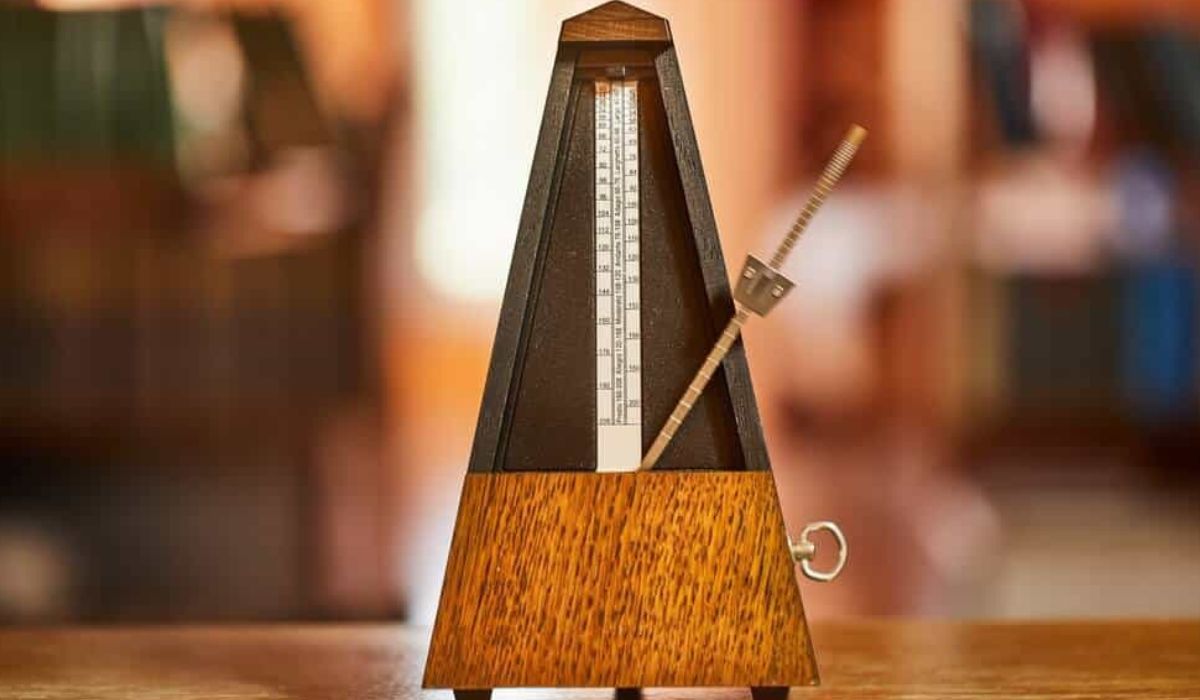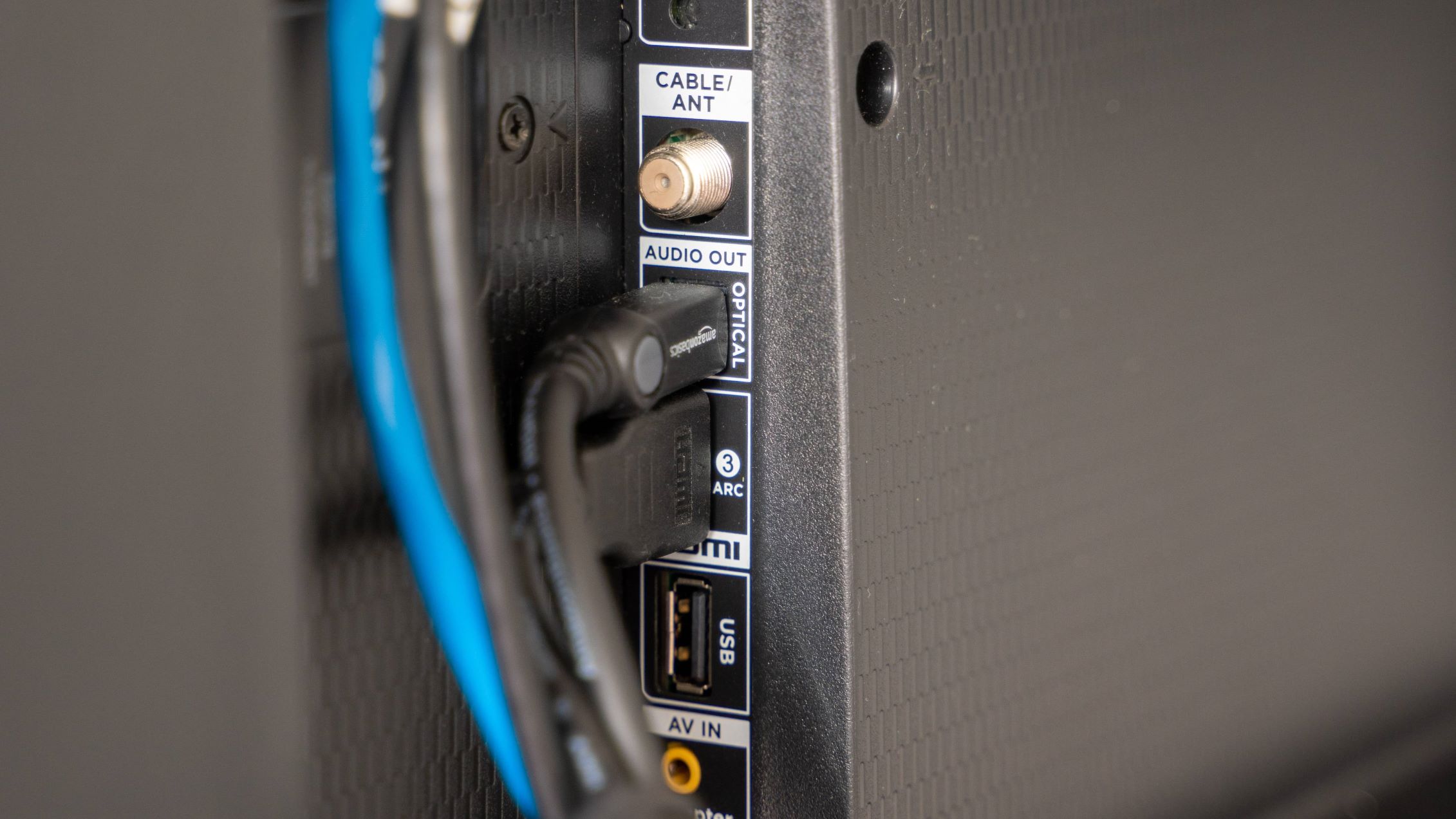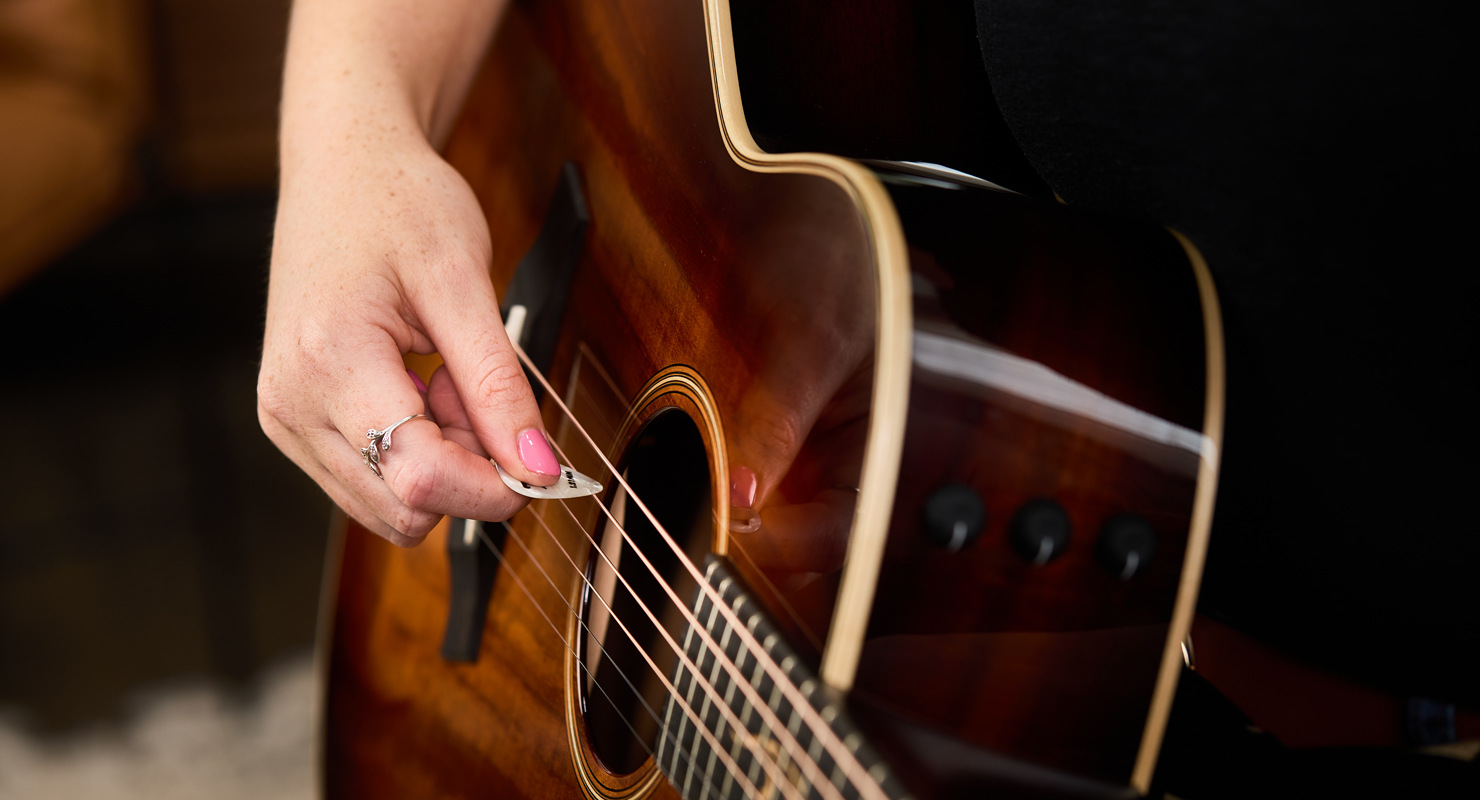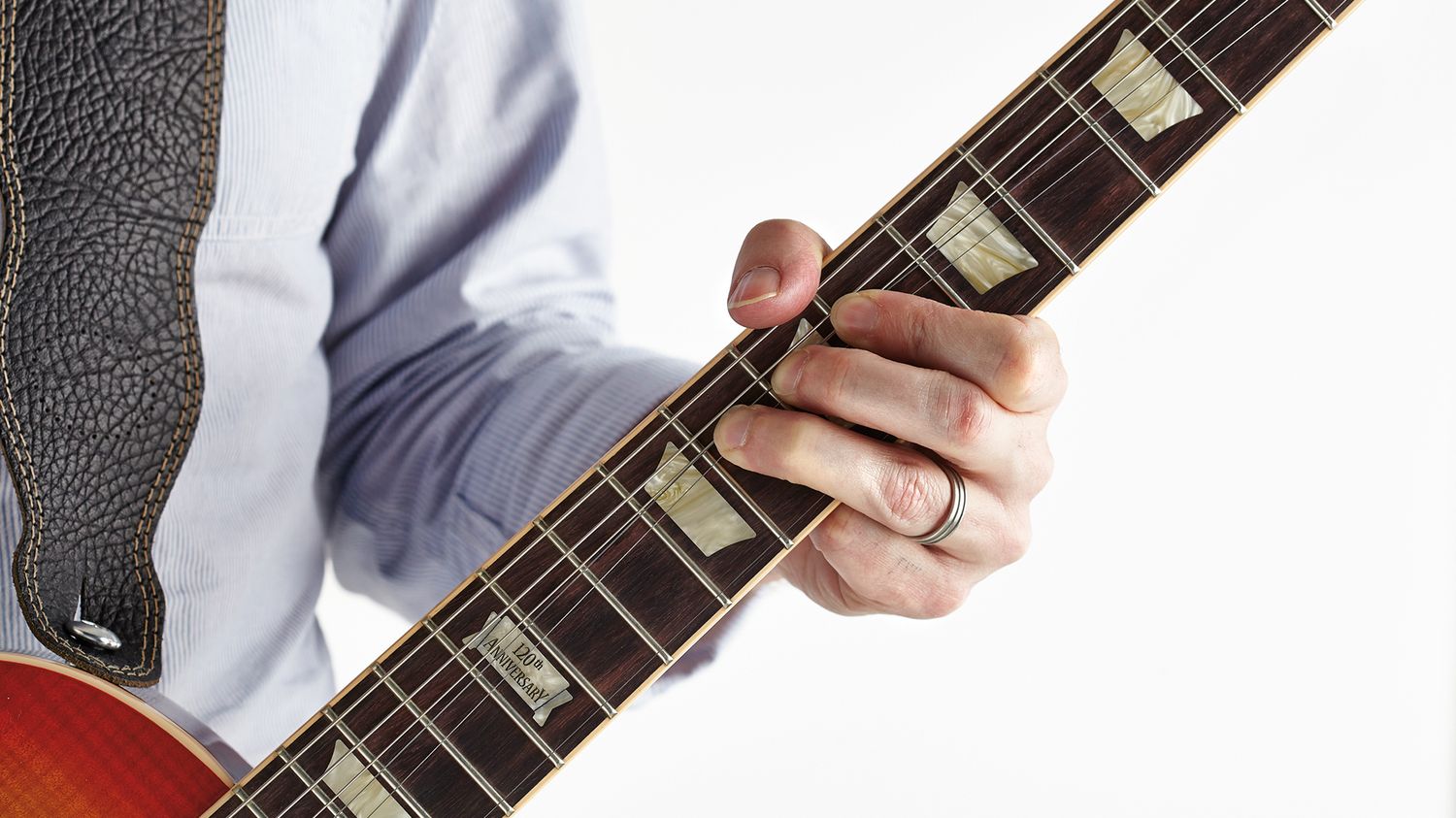Home>Instruments>Guitar>How To Fret Level A Guitar


Guitar
How To Fret Level A Guitar
Modified: February 15, 2024
Learn how to fret level a guitar and achieve perfect intonation. Our step-by-step guide will help you master this essential skill for maintaining your instrument.
(Many of the links in this article redirect to a specific reviewed product. Your purchase of these products through affiliate links helps to generate commission for AudioLover.com, at no extra cost. Learn more)
Table of Contents
Introduction
Playing the guitar is a rewarding experience, but as with any instrument, it requires maintenance to ensure optimal performance. One common issue that guitarists encounter is uneven frets, which can cause buzzing or intonation problems. Fret leveling is a crucial process that addresses this issue, resulting in a smooth and consistent playing surface across the fretboard.
Whether you’re a seasoned guitarist or just starting out, understanding how to fret level a guitar is a valuable skill that can save you time and money on professional repairs. In this comprehensive guide, we will delve into the intricacies of fret leveling, providing step-by-step instructions and valuable insights to help you master this essential technique.
By learning how to fret level a guitar, you’ll not only enhance the playability of your instrument but also gain a deeper understanding of its mechanics. So, grab your guitar and let’s embark on this enlightening journey to unlock the secrets of fret leveling.
What is Fret Leveling?
Fret leveling is a critical process in guitar maintenance that involves ensuring the frets on the fretboard are all at the same height, resulting in consistent and buzz-free playability. Over time, frets can wear unevenly due to factors such as string tension, temperature changes, and playing style. This uneven wear can lead to buzzing, intonation issues, and discomfort while playing.
During fret leveling, a luthier or a skilled guitarist uses specialized tools to precisely file down the tops of the frets, effectively leveling them to the same height. This meticulous process requires attention to detail and a thorough understanding of the instrument’s construction. While it may seem daunting at first, mastering fret leveling can significantly improve the overall performance of a guitar.
By leveling the frets, the guitar’s playability is enhanced, allowing for lower action without fret buzz. Additionally, proper fret leveling contributes to accurate intonation and ensures that each note rings out clearly and consistently across the fretboard. This process is particularly essential for guitars with significant fret wear or those that have never undergone fret leveling since their manufacture.
Understanding the intricacies of fret leveling empowers guitarists to maintain their instruments to a high standard, prolonging their lifespan and preserving their optimal playability. Whether you’re a do-it-yourself enthusiast or seeking insights into the technical aspects of guitar maintenance, delving into the world of fret leveling is a rewarding endeavor that can elevate your playing experience.
Tools and Materials Needed
Before embarking on the fret leveling process, it’s essential to gather the necessary tools and materials. Having the right equipment at your disposal will ensure that the fret leveling procedure is executed with precision and efficiency. Here’s a comprehensive list of the tools and materials required:
- Straightedge: A precision straightedge is crucial for assessing the flatness of the frets. It should span the entire length of the fretboard and have a straight, unyielding edge to accurately detect any unevenness.
- Fret Rocker: This specialized tool is designed to identify high frets by rocking on three frets at a time. It helps pinpoint areas that require leveling.
- Masking Tape: High-quality masking tape is used to protect the fretboard and the guitar’s finish during the leveling process.
- Fret Files: Precision fret files, available in various grits, are used to level the frets evenly without causing damage to the fretboard or adjacent frets.
- Sandpaper: Fine-grit sandpaper is employed to smooth out the frets after filing, ensuring a polished and uniform surface.
- Micro Mesh Pads: These ultra-fine abrasive pads aid in refining the frets to a smooth finish, contributing to excellent playability.
- Protective Gear: Safety goggles and a dust mask are essential for personal protection during the filing and sanding processes.
- String Winder: Removing and reinstalling the strings is part of the fret leveling process, and a string winder facilitates this task efficiently.
- Truss Rod Wrench: Adjusting the guitar’s truss rod may be necessary after fret leveling to optimize the instrument’s neck relief.
By ensuring that these tools and materials are readily available, you can approach the fret leveling process with confidence, knowing that you have everything needed to achieve professional results. Proper preparation and utilization of the right tools are fundamental to the successful execution of fret leveling, contributing to a finely-tuned and enjoyable playing experience.
Step 1: Remove the Strings
Before commencing the fret leveling process, it’s essential to remove the strings from the guitar. This step is crucial as it allows unobstructed access to the fretboard, enabling a thorough assessment and subsequent leveling of the frets. Here’s a detailed guide on how to remove the strings effectively:
- Loosen the Tuning Pegs: Begin by turning the tuning pegs to slacken the tension of each string. This gradual loosening prevents the strings from snapping and ensures a smooth removal process.
- Remove the Bridge Pins (Acoustic Guitars): For acoustic guitars with bridge pins securing the strings, carefully extract the bridge pins to release the strings from the bridge. Use a specialized bridge pin puller or a suitable alternative to avoid damaging the pins or the guitar’s body.
- Unwind and Remove the Strings: Once the tension is sufficiently reduced, unwind the strings from the tuning pegs. Gently pull each string out of its respective tuner, ensuring a smooth extraction to prevent any damage to the guitar or the strings themselves.
- Discard or Set Aside the Strings: Depending on their condition, you may choose to discard the old strings or set them aside for potential reuse. If reusing the strings, ensure that they are properly labeled to maintain their original order and avoid confusion during reinstallation.
By carefully following these steps, you can safely remove the strings from your guitar, preparing it for the subsequent stages of the fret leveling process. Once the strings are removed, you’ll have unrestricted access to the fretboard, allowing for a comprehensive evaluation of the frets to identify any unevenness or high spots that require leveling.
Step 2: Check for High Frets
After removing the strings, the next crucial step in the fret leveling process is to assess the fretboard for high spots or uneven frets. Identifying these irregularities is essential for determining the areas that require leveling to achieve a uniform playing surface. Here’s a detailed guide on how to check for high frets:
- Utilize a Precision Straightedge: Place a precision straightedge along the length of the fretboard, ensuring that it makes full contact with the frets. The straightedge helps detect any gaps or rocking motion, indicating unevenness in the frets.
- Observe Light Under the Straightedge: Shine a light source, such as a small flashlight, beneath the straightedge while inspecting the fretboard. This technique helps reveal any gaps between the straightedge and the frets, highlighting potential high spots that require attention.
- Use a Fret Rocker Tool: A fret rocker tool, featuring different lengths to span three frets at a time, can be employed to pinpoint specific high frets. Rock the tool back and forth across the frets while observing for any rocking motion, which indicates an elevated fret.
- Mark the High Frets: Once high frets are identified, mark them with a soft pencil or masking tape for easy reference during the leveling process. Clearly indicating the areas that require attention facilitates a systematic approach to fret leveling, ensuring that all high spots are addressed.
By meticulously checking for high frets using these methods, you can accurately pinpoint the areas that necessitate leveling, setting the stage for the precise correction of any unevenness across the fretboard. This meticulous assessment ensures that the subsequent fret leveling process is targeted and effective, ultimately enhancing the playability and performance of your guitar.
Step 3: Mark the High Frets
After identifying the high frets on the guitar’s fretboard, the next crucial step in the fret leveling process is to mark these areas for targeted attention during the leveling procedure. Marking the high frets ensures that the leveling process is precise and systematic, addressing the specific areas that require adjustment. Here’s a detailed guide on how to mark the high frets effectively:
- Use a Soft Pencil or Masking Tape: Select a soft pencil or masking tape to mark the high frets. Both options provide excellent visibility and can be easily removed after the leveling process is complete.
- Mark the Top of the Frets: Carefully mark the tops of the identified high frets with a pencil or a small piece of masking tape. This clear indication ensures that the high spots are readily visible and distinguishable during the subsequent fret leveling steps.
- Number or Label the Marked Frets: To maintain a systematic approach, consider numbering or labeling the marked frets to correspond with the leveling sequence. This method aids in tracking the progress and ensuring that all high frets are meticulously addressed.
- Verify the Markings: Double-check the marked frets to confirm that all high spots have been clearly identified. This verification process minimizes the likelihood of overlooking any areas that require leveling, ensuring comprehensive coverage of the fretboard.
By methodically marking the high frets using these guidelines, you establish a clear roadmap for the subsequent fret leveling process, enabling targeted correction of the identified high spots. These markings serve as visual cues, guiding the precise leveling of the frets and contributing to a uniform and optimized playing surface across the fretboard.
Step 4: Level the Frets
With the high frets identified and marked, the next critical phase in the fret leveling process involves precisely leveling the frets to achieve a uniform playing surface. This meticulous procedure requires the use of specialized tools and a systematic approach to ensure optimal results. Here’s a comprehensive guide on how to effectively level the frets:
- Secure the Guitar: Place the guitar in a stable and secure position, ensuring that it remains steady throughout the leveling process. This stability is essential for accurate fret work and prevents unintended movement that could compromise the precision of the leveling procedure.
- Protect the Fretboard and Guitar Body: Cover the fretboard and the guitar body with high-quality masking tape to shield them from inadvertent scratches or damage during the fret leveling process. This protective measure preserves the aesthetics of the instrument while focusing the leveling efforts exclusively on the frets.
- Utilize Precision Fret Files: Select the appropriate grit of precision fret files to begin leveling the identified high frets. With meticulous attention, use the fret files to carefully remove material from the high spots, gradually leveling the frets to match the height of the surrounding frets.
- Check Progress Periodically: Regularly assess the frets’ leveling progress by using the precision straightedge to verify the uniformity of the fret tops. This periodic evaluation ensures that the leveling process remains targeted and consistent, addressing any remaining high spots as needed.
- Refine the Frets: After achieving a uniform fret height, refine the frets using fine-grit sandpaper to smoothen the leveled areas. This refinement contributes to a polished and uniform fret surface, optimizing the playability and feel of the fretboard.
- Verify the Overall Levelness: Perform a final assessment of the fretboard’s levelness, ensuring that all high frets have been effectively leveled and that the playing surface is uniform across the entire fretboard.
By meticulously following these steps and employing precision and care, you can effectively level the frets, resulting in a consistent and buzz-free playing surface. This systematic approach ensures that the fretboard’s playability is optimized, contributing to an enhanced playing experience and improved performance of the guitar.
Step 5: Reinstall the Strings
After successfully leveling the frets and refining the fretboard, the final step in the fret leveling process involves reinstalling the strings onto the guitar. Proper string installation is crucial for restoring the tension and resonance of the instrument, ensuring that it is ready for optimal playability. Here’s a comprehensive guide on how to effectively reinstall the strings:
- Select High-Quality Strings: Choose high-quality guitar strings that are suitable for your playing style and the specific requirements of your instrument. Opting for reliable strings contributes to the overall tone and longevity of the guitar’s setup.
- Thread the Strings Through the Bridge: Begin by threading each string through the corresponding bridge slot, ensuring that they are correctly aligned and seated securely in the bridge. This step establishes the foundation for the string installation process.
- Wind the Strings onto the Tuning Pegs: Gradually wind each string onto its respective tuning peg, maintaining proper tension and ensuring that the winds are neat and uniform. This meticulous winding process prevents slippage and contributes to stable tuning stability.
- Tune the Guitar to Pitch: Utilize an electronic tuner or a tuning app to accurately tune the guitar to the desired pitch, ensuring that each string is in tune and harmonizes with the instrument’s overall tonality.
- Stretch and Settle the Strings: After tuning the guitar, gently stretch and settle the strings by lightly tugging on each string along the length of the fretboard. This process helps stabilize the tuning and minimizes the likelihood of subsequent tuning instability.
- Verify Intonation and Action: Assess the guitar’s intonation and action to ensure that the fret leveling process has contributed to improved playability and tonal accuracy. Make any necessary adjustments to optimize the instrument’s setup.
By meticulously following these steps and paying attention to detail, you can effectively reinstall the strings, restoring the guitar to a fully playable and optimized state. This final phase of the fret leveling process ensures that the instrument’s tonal characteristics and playability are enhanced, providing a rewarding and satisfying playing experience.
Conclusion
Mastering the art of fret leveling is a valuable skill that empowers guitarists to maintain their instruments at an optimal playing condition. By understanding the intricacies of fret leveling and following a systematic approach, guitarists can address uneven frets, eliminate buzzing, and enhance the overall playability of their guitars. This comprehensive guide has provided valuable insights into the fret leveling process, equipping enthusiasts with the knowledge and techniques necessary to undertake this essential maintenance procedure.
From identifying high frets to meticulously leveling and refining the fretboard, each step in the fret leveling process contributes to a uniform and buzz-free playing surface. By utilizing the right tools, exercising precision, and paying attention to detail, guitarists can achieve professional-level results, ultimately elevating their playing experience and the performance of their instruments.
Embarking on the journey of fret leveling not only enhances the technical understanding of guitar maintenance but also fosters a deeper connection with the instrument. As guitarists witness the transformation of their fretboard into a smooth and consistent playing surface, they gain a newfound appreciation for the intricacies of their beloved guitars.
Whether you’re a seasoned guitarist or a passionate enthusiast, fret leveling represents a rewarding endeavor that contributes to the longevity and playability of your instrument. By embracing this essential maintenance process, you can unlock the full potential of your guitar, ensuring that it remains a reliable and inspiring companion on your musical journey.
So, pick up your guitar, apply the knowledge gained from this guide, and embark on the gratifying experience of fret leveling. Your guitar will thank you with improved playability, enhanced tonal clarity, and a renewed joy in every note you play.











